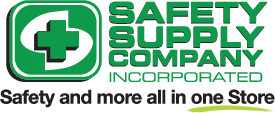Handling Burn Injuries in the Workplace- Prepared for the Unexpected

In any workplace, safety should always be a top priority. Among the myriad of potential hazards that employees face daily, burns represent a significant risk, especially in environments where heat, electricity, chemicals, or hot surfaces are present. From manufacturing facilities to kitchens, offices to construction sites, understanding and implementing proper burn prevention measures is essential for safeguarding both employees and the productivity of the business.
The Importance of Burn Safety
Burns can result in severe injuries, causing pain, disability, and even fatalities. Beyond the immediate physical harm, burns can lead to long-term health complications and psychological distress. Additionally, workplace burns can disrupt operations, resulting in lost productivity, increased insurance costs, and potential legal liabilities.
Identifying Burn Hazards
The first step in preventing workplace burns is identifying potential hazards. These may include:
- Heat Sources: Machinery, equipment, and processes that generate heat pose a significant risk. Examples include ovens, stoves, welding equipment, and hot surfaces.
- Chemicals: Many workplaces use chemicals that can cause burns upon contact with the skin. Proper handling, storage, and use are essential to prevent accidents.
- Electricity: Electrical equipment and wiring can cause burns through electrical shock or arcs. Faulty wiring, overloaded circuits, and improper use of electrical devices can all increase the risk.
- Radiation: Industries such as healthcare and manufacturing may involve radiation sources that can cause burns if proper precautions are not taken.
- Fire: Combustible materials, flammable liquids, and faulty fire prevention measures can lead to fires, resulting in burns and other injuries.
Preventive Measures
Once burn hazards are identified, implementing preventive measures is crucial. Here are some strategies to enhance burn safety in the workplace:
- Employee Training: Proper training is fundamental in raising awareness about burn hazards and teaching employees how to safely operate equipment, handle chemicals, and respond to emergencies.
- Personal Protective Equipment (PPE): Providing appropriate PPE such as heat-resistant gloves, aprons, goggles, and flame-retardant clothing can significantly reduce the risk of burns.
- Engineering Controls: Implementing engineering controls like machine guarding, insulation of hot surfaces, and ventilation systems can minimize exposure to burn hazards.
- Safe Work Practices: Establishing and enforcing safety protocols, such as proper storage and handling of chemicals, regular equipment maintenance, and adherence to electrical safety standards, are essential for preventing workplace burns.
- Emergency Preparedness: Developing and practicing emergency response plans, including evacuation procedures and first aid training, can mitigate the consequences of burn incidents.
Creating a Culture of Safety
Beyond implementing preventive measures, fostering a culture of safety is paramount. Encouraging open communication, actively involving employees in safety initiatives, and recognizing and addressing potential hazards proactively can help create a workplace where safety is ingrained in every aspect of operations.
Conclusion
In conclusion, prioritizing burn safety in the workplace is not just a legal obligation but a moral imperative. By identifying burn hazards, implementing preventive measures, and fostering a culture of safety, employers can protect their most valuable asset—their employees—and ensure the continued success and sustainability of their businesses. Remember, when it comes to workplace safety, prevention is always better than cure.
Recently Viewed Items
Blog Articles
Check out more articles
PPE: The Unspoken Love Language
Wearing PPE: Protecting Your Present and Securing Your Future
View MoreTips to Improve Safety While Working With Heavy-Duty Mobile Equipment
Improving the safety of ground personnel working around mobile equipment, such as forklifts, excavators, etc., requires a combination of engineering controls, administrative measures, and behaviora
View MoreWhy You Should Service Your Safety Equipment
Safety equipment serves as the frontline defense against workplace hazards, ensuring the well-being of employees and minimizing risks.
View More






